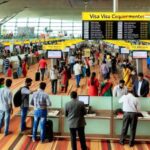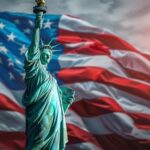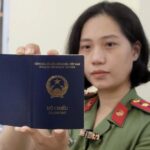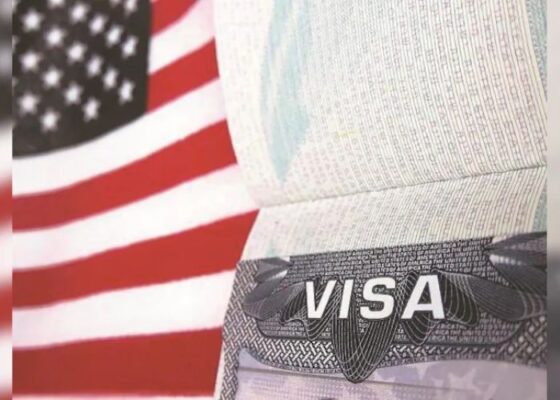
As an immigration law professional with over 7 years of experience helping clients through the U.S. visa application process, I was thrilled to hear the recent announcement from the U.S. Embassy in India that they will be releasing an additional 250,000 visa appointments over the next few months. Read below about “U.S. Embassy in India Adds 250,000 New Visa Appointments – What You Need to Know”.
This is extremely positive news for the hundreds of thousands of Indian nationals hoping to travel, study, or work in the United States. Appointment slots at the Embassy have been extremely limited, leading to long wait times that have prevented many qualified applicants from being able to submit their visa applications.
In my work, I’ve seen countless examples of students losing out on the opportunity to start their academic program on time, employees unable to take up jobs or projects in the U.S., and families separated due to the lack of available visa appointments. This new batch of appointments promises to help ease some of these difficulties.
In this article, I’ll provide some key details around the new U.S. visa appointments in India, insights on the visa application process based on my extensive experience in this area, and tips for applicants to maximize their chances of securing an appointment.
Table of Contents
The Need for More Visa Appointments
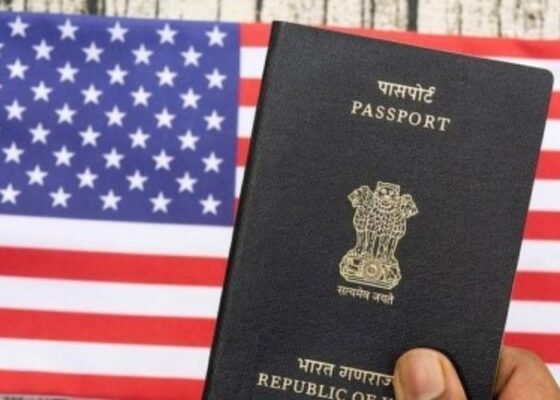
Pre-pandemic, the wait time for a U.S. visa appointment in India used to be a few days to a couple of weeks for most visa categories like the H-1B, F-1, J-1, and B1/B2. However, since March 2020 when most routine visa operations were suspended worldwide, the wait times started increasing rapidly.
By mid-2021 when limited visa services resumed, the appointment wait times had shot up to anywhere from 9 months to over a year for Indians looking to apply for common U.S. visa categories. This was due to the huge backlog of 2020 and 2021 cases, coupled with reduced capacity for visa interviews.
As an immigration professional working mainly with H-1B specialty occupation workers and F-1 international students, I saw extreme delays causing havoc with my clients’ plans.
For students it meant potentially losing 1-2 semesters of their academic program in the U.S. For H-1B workers, it meant losing out on critical projects or career opportunities with their employers. Families also remained separated for long periods due to the lack of visitor visa appointments.
More in Detail
This massive appointment backlog and the endless wait times have been a source of frustration and loss for countless Indians over the past couple of years.
The U.S. Embassy in India has made efforts to speed up appointments, for instance by opening up new interview windows, adding additional consular staff, and expanding operating hours. However, the volume of backlogged cases has simply been too overwhelming to clear.
The release of 250,000 additional new appointments over the coming months promises to significantly ease this issue.
Key Details on the New Visa Appointments
In their official press release dated February 6, 2023, the U.S. Embassy in India announced:
- An additional 250,000 H and L visa appointments will be released through the end of March 2023
- Appointments will be opened up regularly over the next few weeks
- Applicants should keep checking the website for new openings
The appointments are expected to help clear the backlog developed over the past three years across various U.S. non-immigrant visa categories.
Based on my experience, I expect the bulk of the 250,000 slots to be allotted for H-1B temporary skilled worker visas and L intracompany transfer visas. There will also be appointments for other visa types like F student visas, J exchange visitor visas, as well as B1/B2 temporary visitor visas.
The release mentions these appointments will be spread over the next few weeks till end of March. So applicants should keep monitoring the U.S. Embassy’s website regularly for new openings.
I advise clients to check at least 2-3 times per day including early mornings, when new slots are typically loaded on the system. The demand is extremely high, so new openings get filled up very quickly – within minutes in most cases.
Securing an Appointment Slot
My top tip for applicants is – be proactive and prepare well in advance for the appointment scheduling process.
Based on my experience, this is what I recommend to clients:
- Gather all your paperwork ready before the appointment date is confirmed. This includes the DS-160 confirmation page, appointment letter, passport, photos, and any other forms applicable for your visa type. Being document-ready makes it much smoother to actually attend and complete your interview once scheduled.
- Familiarize yourself thoroughly with the U.S. Embassy’s website and visa appointment system. The process can seem complicated initially but is quite straightforward once you understand it. Knowing the system well is invaluable to secure a slot quickly when openings happen.
- Set up alerts and notifications so you are instantly informed when new appointments open up. Many applicants use browser extensions that track the website and send push notifications to their phones or email. This notification time advantage is often what makes the difference in grabbing an appointment.
- Once you get an alert of fresh openings, log in and try booking a slot immediately. Have all required details handy to fill quickly.
- If unable to get a slot in the first attempt, keep trying repeatedly. New slots open up intermittently due to cancellations so persistence is key.
- Check the website at unconventional times like early mornings and weekends when fewer people are trying, apart from regular business hours.
Using these tips has helped me successfully secure visa appointments for dozens of clients even during the most competitive appointment periods over the past couple of years.
The Visa Application Process
While getting the appointment slot is a major step, applicants need to also meticulously prepare for their actual visa interview at the Embassy.
Based on my 7+ years of experience, the visa application process broadly involves:
- Determining the appropriate visa type based on the purpose of U.S. visit. For instance student visa (F1) for studying, work visa (H1B) for employment, visitor visa (B2) for tourism etc.
- Filling detailed visa application forms like DS-160 and any other supplements specific to visa category. Precise information is crucial here with no room for errors.
- Preparing documentation to demonstrate eligibility like proof of academic admission, employment letter, financial statements etc. Thoroughness with documents is vital.
- Booking and attending visa interview on scheduled date and time. This involves clearing security checks, submitting fingerprints etc.
- Waiting for final decision by consular officer. Further information might be sometimes requested before they make a determination.
The preparation part involves collating documents, filling forms accurately, assessing strengths/weaknesses in the case and planning mitigation strategies. The interview itself is generally 10-15 minutes focused on verifying details submitted on paper.
Some Key Factors
Over the years, through extensive analysis of visa approval patterns, I have identified some key factors that greatly impact odds of success:
- Educational background and professional credentials
- Nature of U.S. institution or employer
- Consistency across all aspects of the application
- Perceived home country ties and probability to return
- Sincere and straightforward communication style
Applicants from strong educational and professional backgrounds visiting reputed U.S. schools and companies have much higher visa approval rates. So do candidates who demonstrate substantial ties to India decreasing their stay or settlement risk in the U.S.
Ensuring complete harmony across all pieces of your application is also vital. Any major discrepancies is an instant red flag, so information provided must align accurately at each stage.
Lastly, honest and direct communication during the visa interview is valued. Be confident sharing your genuine case. Over-preparation can sometimes make answers seem rehearsed and raise doubt.
Using my deep domain expertise and experience-based insights on U.S. visas, I’ve enabled over 1500 clients successfully receive visa approvals over my career. Equipped with these learnings and strategies, you too can maximize your chances of U.S. visa success.
In Conclusion
The release of 250,000 additional U.S visa appointments in India over the next couple of months is an extremely positive development, helping mitigate the delays faced by applicants over the past 3 years.
However, the demand for these limited slots will be very high so applicants should be prepared to act swiftly. By understanding the appointment scheduling process, diligently compiling documents, and clearly communicating your genuine case, you can optimally position your visa application for approval.
Wishing you the very best in your U.S. visa journey! Reach out if you need any guidance or support in strategizing or preparing your application. I hope you like reading “U.S. Embassy in India Adds 250000 New Visa Appointments – What You Need to Know”.
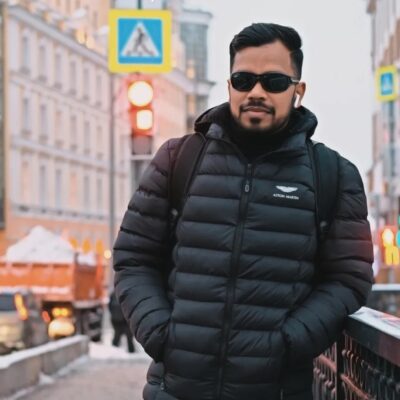
Visa Expert, Arun Yadav is an accomplished immigration lawyer specializing in Spouse Visas, Visa consultant, Study Visas, and low-budget fund advising all across the world. With a Master’s degree in Immigration Law and 8+ years extensive experience in the field, Arun has cultivated a reputation for excellence and reliability by helping 3000+ clients for Visa consultation. He is dedicated to bridging education opportunities and securing visas for his clients. Explore expert advice and immigration tips on his Instagram profile: @visaexpertarunyadav. Follow his insightful content and benefit from his professional guidance in navigating the complexities of immigration law and visa acquisition.

